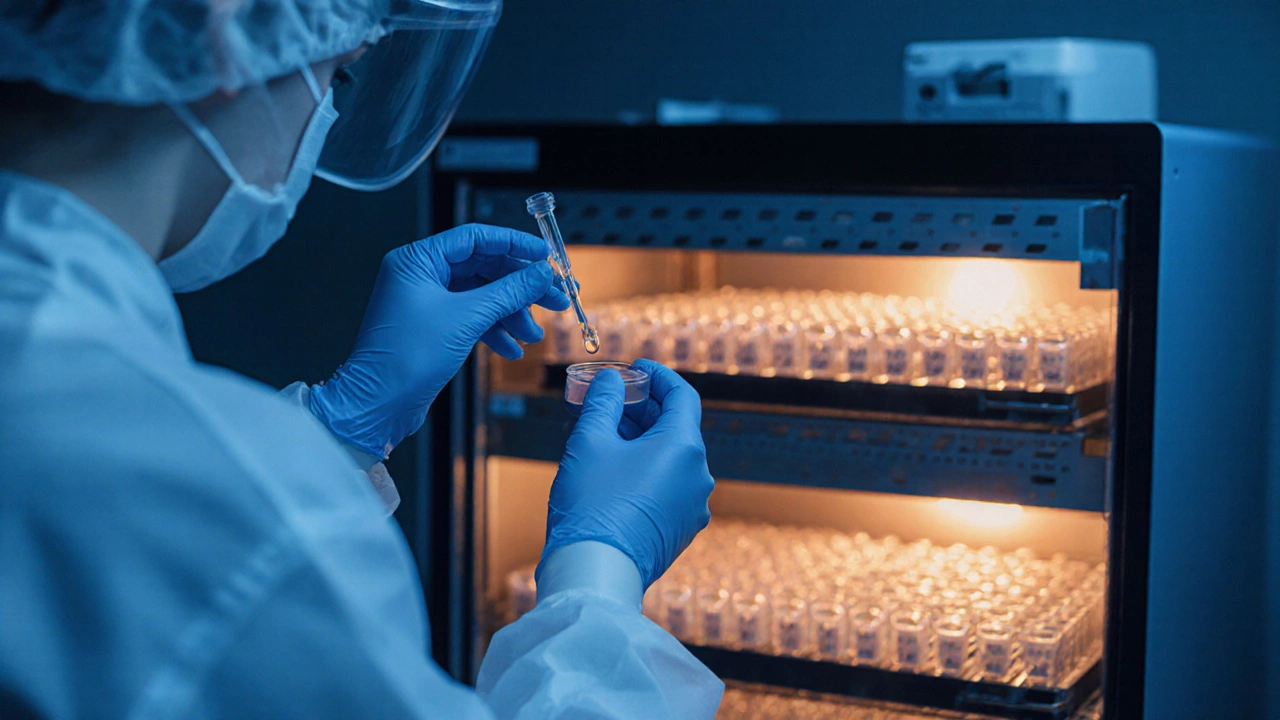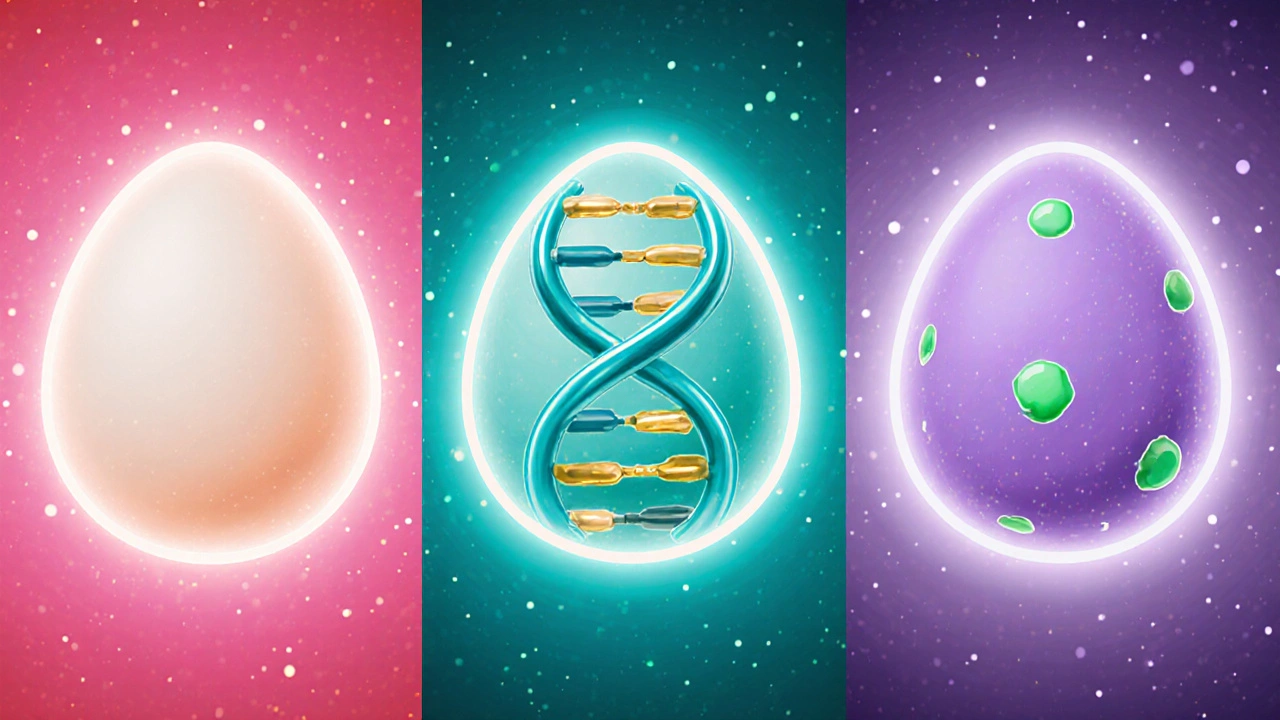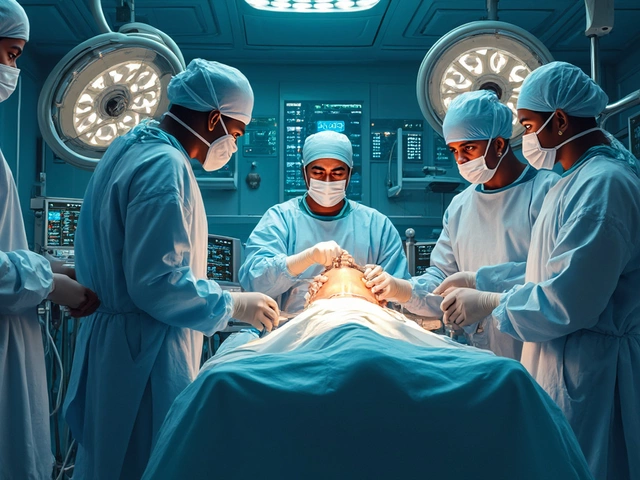- Home
- ::
- IVF Baby DNA: Does the Mother Contribute Genetic Material?

IVF Baby DNA: Does the Mother Contribute Genetic Material?
When you hear the word IVF baby DNA, the first thought is often: "Is the mother’s genetic code really in the child?" The answer is both simple and layered. In every naturally conceived pregnancy, a child gets half of its nuclear DNA from the mother and half from the father. IVF (in vitro fertilisation) follows the same biological rule, but the lab environment adds extra steps that can confuse people. Let’s unpack how DNA travels from mum, dad, and sometimes donors into an IVF baby.
How DNA is Passed On - The Basics
Each human cell carries DNA, a long molecule made of four bases that form the genetic blueprint. DNA lives in two parts:
- Nuclear DNA - organized into 23 pairs of chromosomes inside the cell nucleus. One set of 23 comes from the mother’s egg, the other from the father’s sperm.
- Mitochondrial DNA (mtDNA) - a tiny circular genome inside mitochondria, the cell’s power plants. Almost all mtDNA is inherited from the mother because the egg supplies the mitochondria.
These rules are the same whether fertilisation happens inside the body or in a petri dish.
What Happens in IVF?
In IVF, doctors collect mature egg cells from the mother (or a donor) and sperm from the father (or a donor). The gametes are mixed in the lab, allowing fertilisation to occur. The resulting embryo develops for a few days before being transferred back into the uterus.
Because the fertilisation step still fuses a maternal egg with paternal sperm, the embryo’s nuclear DNA is always a 50‑50 split of the two parents-provided the gametes come from the intended mother and father.
The Role of Nuclear DNA in an IVF Baby
When a woman uses her own eggs, the child’s nuclear DNA mirrors the natural process:
- 23 chromosomes from the mother’s egg (maternal set)
- 23 chromosomes from the father’s sperm (paternal set)
Even if the fertilisation happens outside the body, the genetic contribution does not change. Laboratories never add extra nuclear DNA; they merely create the conditions for the two gametes to meet.
Thus, when a mother completes a standard IVF cycle with her own eggs, the baby definitely has her DNA.

What About Mitochondrial DNA?
All the mitochondria-and therefore almost all mtDNA-come from the egg. In a conventional IVF cycle, the mother’s mitochondria are passed to the baby, just like in natural conception. The amount of mtDNA contributed is tiny compared to nuclear DNA, but it matters for cellular energy production and can influence certain metabolic disorders.
There are two notable exceptions:
- Egg donation: If a donor provides the egg, the baby receives the donor’s mtDNA, not the intended mother’s.
- Mitochondrial replacement therapy (MRT): In rare cases where a mother’s mitochondria carry harmful mutations, doctors replace them with healthy donor mitochondria. The child’s nuclear DNA still comes from the parents, but the mtDNA originates from a third party.
Scenarios Where Mom’s DNA Might Not Be Present
While rare, a few IVF‑related procedures can result in a child without the intended mother’s genetic material:
| Procedure | Source of Nuclear DNA | Source of Mitochondrial DNA |
|---|---|---|
| Standard IVF (own eggs) | Mother + Father | Mother |
| Egg donation | Donor + Father | Donor |
| Mitochondrial replacement therapy | Mother + Father | Donor (mitochondria only) |
| Gestational surrogacy (egg from mother) | Mother + Father | Mother |
In gestational surrogacy, the surrogate carries the pregnancy but does not contribute DNA, so the child still has the intended mother’s genetic material.
Pre‑implantation Genetic Testing (PGT) - Knowing DNA Before Transfer
Many IVF clinics offer pre‑implantation genetic testing (PGT). A few cells are biopsied from the embryo on day 5‑6, and the DNA is analysed for chromosomal abnormalities or specific genetic conditions.
PGT does two things:
- Confirms that the embryo’s nuclear DNA is intact (e.g., no extra or missing chromosomes).
- Can screen for single‑gene disorders inherited from either parent, such as cystic fibrosis or sickle‑cell disease.
The testing itself does not alter the DNA; it merely reads it. So, when PGT reports “the embryo carries the mother’s CFTR mutation,” it’s confirming the presence of maternal DNA, not changing it.

Common Misconceptions About IVF and Maternal DNA
1. "IVF creates a clone of the mother" - Wrong. Cloning would require copying the entire nuclear genome from a somatic cell, which IVF never does.
2. "The lab adds extra DNA to the embryo" - No. Labs only combine the two gametes; they do not insert foreign genetic material unless a specific gene‑editing technique (like CRISPR) is used, which is still experimental and highly regulated.
3. "If the mother’s eggs are low‑quality, the baby won’t have her DNA" - Not true. Egg quality affects developmental potential, not the origin of DNA. Even a low‑quality egg still supplies the mother’s nuclear and mitochondrial DNA.
Bottom Line: Does an IVF Baby Have Mom’s DNA?
In a typical IVF cycle using the intended mother’s own eggs and the father’s sperm, the answer is a clear “yes.” The baby receives 50 % of nuclear DNA from each parent and almost all mitochondrial DNA from the mother. Only when a donor egg or mitochondrial replacement is used does the maternal genetic contribution change, and in those cases, the clinic will explain the donor’s role up front.
Understanding the biology helps dispel myths and empowers prospective parents to make informed choices about the types of IVF treatments that best fit their family plans.
Frequently Asked Questions
Will my child have my DNA if I use my own eggs?
Yes. The embryo’s nuclear DNA is a 50‑50 split of your egg’s chromosomes and your partner’s sperm, and the mitochondria (mtDNA) also come from your egg.
What if I use a donor egg?
The donor’s nuclear DNA and mitochondrial DNA become part of the baby. You would be the gestational mother (carrying the pregnancy) but not the genetic mother.
Can IVF clinics test which parent’s DNA is present before implantation?
Yes. Pre‑implantation genetic testing (PGT) can identify parental genetic markers and screen for inherited disorders, confirming the presence of each parent’s DNA.
Is mitochondrial DNA ever taken from a donor?
Only in specialized procedures like mitochondrial replacement therapy, which is used to avoid serious mitochondrial diseases. In standard IVF, the mother’s mitochondria are retained.
Does using IVF increase the risk of genetic abnormalities?
IVF itself does not cause genetic issues; however, parental age and the underlying fertility problem can affect risk. PGT helps identify embryos with chromosomal abnormalities before transfer.

 Health and Wellness
Health and Wellness





Write a comment